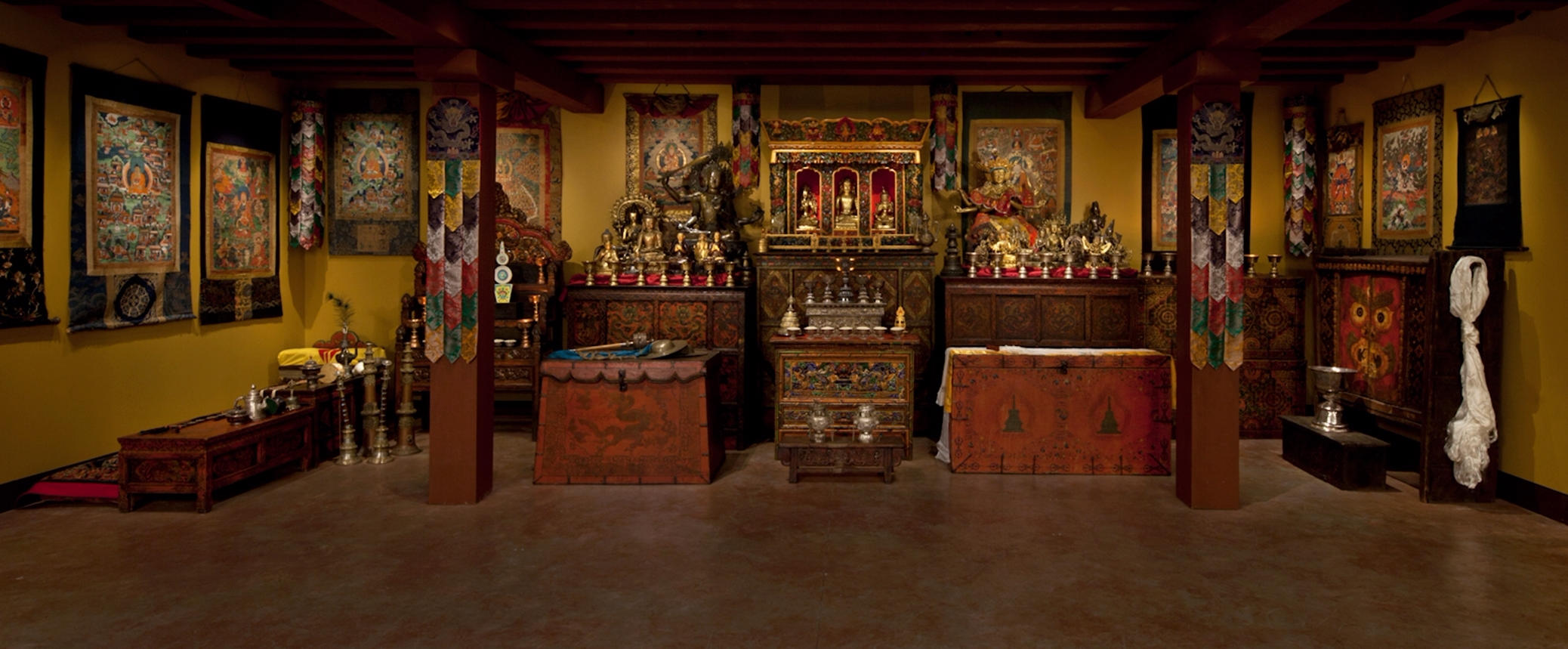
The Tibetan Buddhist Shrine Room [Image courtesy of RubinMuseum.org]
In a recent interview for Splacer Magazine, Rubin Museum Director of Programs and Engagement Tim McHenry explains how the idea for ‘Sacred Spaces’ came to be. McHenry describes how, after the opening of the
“Tibetan Buddhist Shrine Room in an intimate, but cramped nook on the second floor gallery, there was a realization that it was inadequate…We wanted to create an environment that allowed for a durational relationship, one that builds up through exposure over time.”
When it opened in 2010, the Rubin’s Shrine Room wasn’t supposed to be permanent (it was on loan from the Arthur M. Sackler Gallery at the Smithsonian); the current iteration was supported through a crowdfunding campaign on Razoo. The exhibit explores the meaning of physical space in a couple of different ways: there is a 360-degree panoramic photograph of the Himalayan Mountains, which circumscribes the exhibit’s Shrine Room, and a video installation documenting a Jain communal ritual in which a massive stone sculpture is erected every dozen years. The video invites viewers to consider the concept of rituals–I found this aspect of the film to be particularly meaningful.
The room where Sacred Spaces is on display conveys a sense of intimacy–and also community. The two aren’t at odds with each other. Visitors are given the sense that in the personal, there is the universal. To that end, Sacred Spaces asks its visitors to consider: what spaces are sacred to you?
The Sacred Spaces exhibition is open to the public through October 17th. The beginning of autumn strikes me as a rather contemplative time of year. Make a date with yourself to catch this fascinating exhibit before it closes!